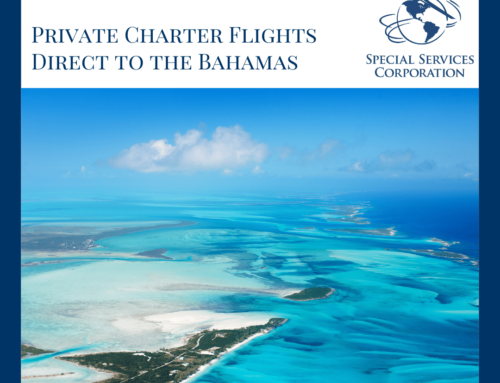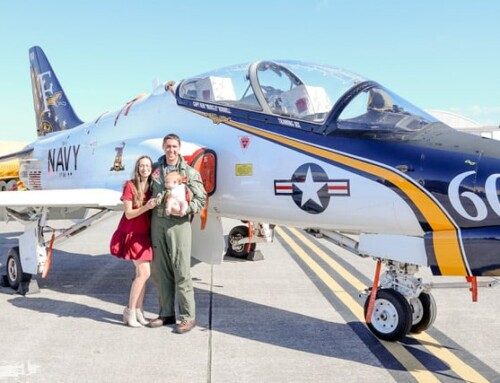Many first time users of private aviation choose not to invest capital into aircraft ownership from the start. The following discusses non-aircraft ownership pay-as-you go options to access private aircraft travel.
Aircraft Charter
Aircraft charter may be offered only by an aircraft operator who is certificated by the Federal Aviation Administration (FAA) to sell aircraft use for hire to the public. Like the airlines, aircraft charter is a commercial operation and is regulated by the FAA to the highest operating and safety standards.
Chartering an aircraft is a very popular and flexible option to access private aircraft travel. There is no capital investment or associated ownership costs. Private aircraft charter allows access to various aircraft types and sizes to serve the less frequent or one-time mission. The choice may be a larger and somewhat faster aircraft to travel coast-to-coast or internationally, or a smaller, slower aircraft to travel the shorter destinations. Aircraft charter is a cost-effective alternative to low utilization consumers.
Professional charter pilots are required the same level of training and certification as airline pilots. Charter certificated operators are highly scrutinized by the FAA and other auditing agencies. The aircraft charter industry safety record is among the highest recorded.
That being said, we recommend a due diligence research into the company with whom you choose to do business. Company’s safety records, experience, and insurance coverage may vary. Generally, look for a charter company that operates with their own certificate and is audited by Wyvern, ARGUS and/or IS-BAO standards.
Aircraft available to charter range from large multi-engine jets to small single-engine airplanes, with seating for 100+ passengers, down to 2 or 3 passengers.
Although all aircraft are considered safe, multi-engine turbine powered aircraft have a higher safety record than single-engine piston powered aircraft. The reasons are the combined reliability of the turbine engines than piston engines and the designed aircraft systems redundancy on multi-engine aircraft. Although not always the case, most turbine powered aircraft are flown by more experienced pilots.
The Cirrus Aircraft Company makes available a “parachute” on their single-engine aircraft as an additional level of safety. Although Cirrus is the first to offer this level of single-engine safety, others are now following their lead.
Since there is no capital investment and/or ownership associated with charter, tax depreciation is not available. However, the Internal Revenue Service (IRS) does impose a 7.5% Federal Excise Tax (FET) and a Passenger Segment Fees on chartered aircraft services. The segment tax is currently $3.70 for each passenger per each trip leg. The charter operator is required by the IRS to collect, file and pay the tax. Special Services generally includes the FET tax and segment fees in the trip quote when received unless otherwise noted.
Jet Cards
Realizing the market for on-demand charter, fractional program operators and many charter brokers have decided to join the aircraft charter market. Fractional ownership is not for everyone, so the decision was made to sell outside aircraft charter marketed and sold under “card programs.”
The following overview gives three examples of “card programs” provided mostly through fractional program operators. These programs have been made familiar by broad marketing efforts. Card programs differ from normal charter pricing primarily in that the “card” generally requires a minimum block of flight time be purchased and paid for up front.
Marquis Jet Card
Net Jets is the provider of the Marquis Jet Card program. The advertised pricing for 25 flight hours in a light jet starts at $135,900, plus FET and segment fees. This is approximately $5,436 per flight hour for the least expensive jet. Again, to reiterate, the $135,900 will be paid out of your pocket before the first hour is flown. The card will then be debited as you travel.
Citation Air Jet Card
Citation Air is the provider of the Citation Air Jet Card program. The advertised pricing for a light jet starts at $5,374 per flight hour during non-peak time travel, and $6,988 per flight hour during peak time travel, plus FET and passenger segment fees. Citation Air also requires a $100,000 minimum purchase up front.
Jet Pass Select Card
Flight Options is the provider of the Jet Pass Select Card program. The advertised pricing for a light jet starts at $3,970 per flight hour, but does not include fuel or the taxes. Add the fuel cost and you are over $5,000 per flight hour, plus FET tax and segment fees. Flight Options requires a $100,000 minimum purchase up front.
Most charter card programs impose peak and non-peak travel times during the day and other peak days at an added higher premium. Card program flights also require an advanced notice before scheduling.
Aircraft charter card programs and normal aircraft charter may support the private aircraft consumer with a specific utilization need. Again, depreciation is not allowed since there is no ownership investment involved. The card programs do advertise “one way” trip pricing and not charged for the repositioning of the aircraft. Keep in mind this is factored into the higher flight hourly rate charged for the passenger “occupied” only trip legs. However, normal aircraft charter, by the trip, is generally more cost effective than a card program.
Special Services Frequent Flyer Program
Most aircraft management companies that operate aircraft charter generally use a less complex and simpler plan than the “flight cards”.
Special Services Corporation (SSC) sets the example by making light jets available without peak and non-peak premiums, without up front deposits, at lower flight hour rates, all while maintaining the highest crew and aircraft safety standards.
Simply call any time and you may be on your way in 90 minutes or less, anytime of the day, any day of the week, year round, including holidays.
SSC offers quantity block flight time options at even lower rates. Simply pay as you travel.
Visit our website www.specialservicescorp.com for a charter or block time quote today or ask for a customized program that cost effectively serves your private aircraft travel needs.
Let’s consider another non-ownership private aircraft access option available.
Aircraft Leasing
An aircraft lease is defined when an aircraft owner transfers aircraft possession to another person or business. The owner retains the aircraft title and ownership, but relinquishes possession to the lessee.
There are two basic types of aircraft leases: wet lease and dry lease.
A dry lease makes provision to lease only the aircraft to the lessee. This is the simplest of the two lease types. Aircraft owner operational control is relinquished to the lessee.
A wet lease is more complex making provisions to lease the aircraft and crew. A wet lease does not relinquish aircraft owner operational control since a full control transfer is not made.
Both lease types are regulated by the Federal Aviation Regulations (FAR) and controlled by the Federal Aviation Administration (FAA). Lease arrangements should be advised by aviation professionals to ensure not only that they are in compliance with the FAA regulations, but carefully structured to clarify possession and operational control intent in accordance with the Internal Revenue Service (IRS). The definitions of operational control are contrasted between the FAA and IRS.
Aircraft lease agreements may also be constructed as an exclusive or non-exclusive aircraft use lease. Non-exclusive use leases allow both owner and lessee to operate the aircraft.
Aircraft leases may be good for aircraft owners to provide lease income to help reduce certain expenses associated with ownership.
Aircraft leases may be good for the lessee to provide possession and access of an aircraft at a reduced cost than full ownership. Again, depreciation is not allowed to the lessee with aircraft lease agreements.
In summary, there are many aircraft owner and non-ownership options to consider. Before making these decisions, we strongly recommend that you consult with aviation professionals.







The rules to follow for flying privately are:
1) 0-100 hours Jet Cards
2) 100-300 hours Fractional Ownership
3) 300+ Full ownership in an aircraft.